Mastering HubSpot API: A Complete Guide for Developers

At Drop Cowboy, we understand the power of integrating different tools to streamline business processes. That’s why we’re excited to dive into the world of HubSpot API development.
In this comprehensive guide, we’ll explore the fundamentals of working with HubSpot’s API, from understanding its basics to mastering advanced techniques. Whether you’re a seasoned developer or just starting out, this post will equip you with the knowledge to leverage HubSpot’s API effectively in your projects.
What is the HubSpot API?
The HubSpot API serves as a powerful tool for developers to integrate HubSpot’s functionality into their applications. It consists of a set of protocols and tools that enable different software systems to communicate with HubSpot’s platform.
Types of HubSpot APIs
HubSpot offers several API types, each with a specific purpose:
- REST API: The most common type, it allows developers to perform CRUD (Create, Read, Update, Delete) operations on HubSpot data.
- Webhooks API: This API enables real-time notifications when specific events occur in HubSpot.
- GraphQL API: It provides a more flexible way to query and manipulate data.
Authentication and Access Tokens
To use the HubSpot API, developers must authenticate their requests. This process typically uses OAuth 2.0, which provides a secure method to grant third-party applications access to HubSpot data without exposing user credentials. Access tokens authenticate API requests, and developers must manage these tokens securely to prevent unauthorized access.
Rate Limits and Best Practices
HubSpot imposes rate limits on API requests to ensure fair usage and system stability. As of 2025, the standard rate limit is 100 API calls per second, with a daily limit of up to 500,000 for higher-tier accounts. Developers should implement retry mechanisms and respect these limits to avoid disruptions in their integrations.
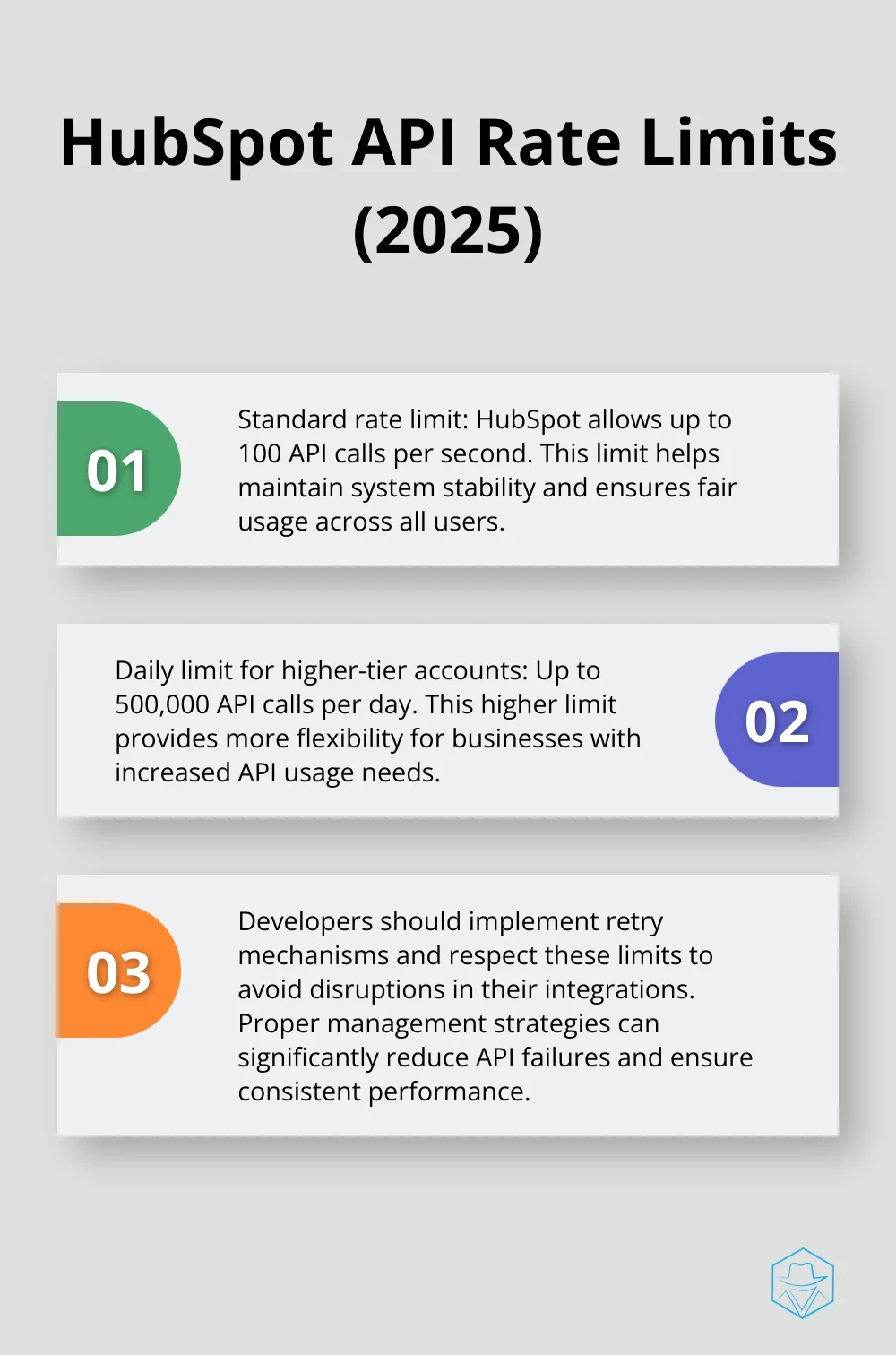
Practical Applications
The HubSpot API can transform business operations in numerous ways. For example, companies can use it to automate lead nurturing processes, potentially increasing conversion rates. Others might leverage the Webhooks API to trigger personalized campaigns based on specific HubSpot events, which could boost engagement significantly.
While HubSpot’s API offers powerful capabilities, businesses looking to enhance their communication strategies might also consider platforms like Drop Cowboy. Drop Cowboy’s unique features (such as Mimic AI™ for voice cloning and Smart Delivery™ for efficient global message delivery) can complement HubSpot integrations, providing a more comprehensive marketing and communication solution.
As we move forward, let’s explore the common API endpoints and their functions, which will help you understand how to interact with HubSpot’s data effectively.
How to Interact with HubSpot API Endpoints
Common API Endpoints
HubSpot’s API offers over 250 endpoints, each serving a specific purpose. Some of the most frequently used endpoints include:
- /contacts: This endpoint allows you to manage contact information, create new contacts, and update existing ones.
- /companies: Use this to interact with company data, including creating and updating company records.
- /deals: This endpoint enables you to manage deals in the sales pipeline, including creating new deals and updating their stages.
- /engagements: Use this to track interactions with contacts, such as emails, calls, or meetings.
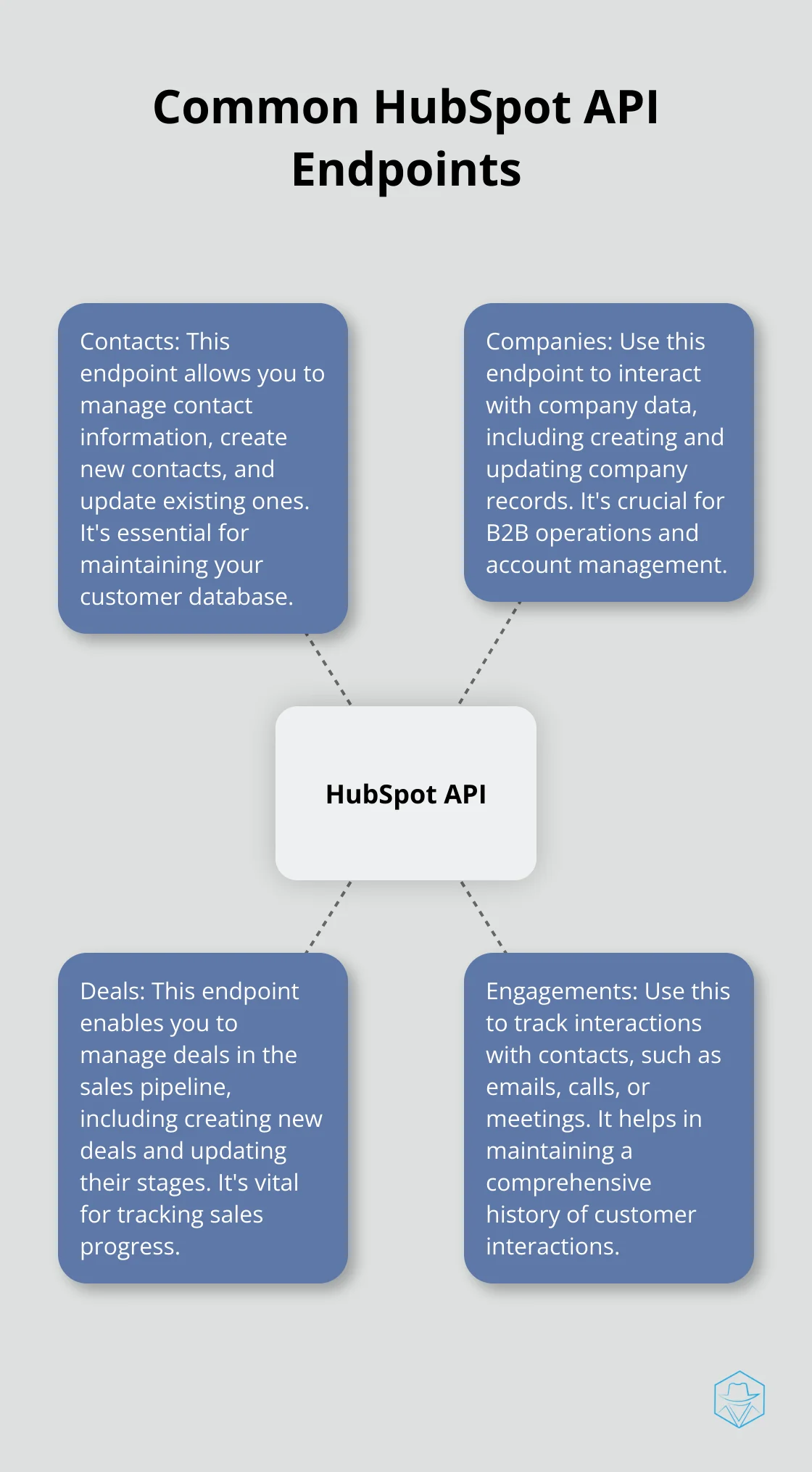
Making API Requests
When making requests to HubSpot’s API, you need to use HTTP methods like GET, POST, PUT, and DELETE. Here’s an example of how you might use cURL to retrieve a list of contacts:
curl -X GET ‘https://api.hubapi.com/contacts/v1/lists/all/contacts/all’ -H ‘Authorization: Bearer YOUR_ACCESS_TOKEN’
For those using programming languages, HubSpot provides SDKs for popular languages like Python, PHP, and Ruby. These SDKs can simplify the process of making API requests. For instance, using the Python SDK, you could retrieve contacts like this:
import hubspotclient = hubspot.Client.create(access_token=’YOUR_ACCESS_TOKEN’)all_contacts = client.crm.contacts.get_all()
Handling API Responses and Errors
When working with HubSpot’s API, you must properly handle responses and errors. Successful requests typically return a JSON response with a 200 OK status code. However, you may encounter various error codes, such as 400 for bad requests or 401 for authentication issues.
To effectively handle these responses, implement try-catch blocks in your code to catch and log errors. This practice can help you quickly identify and resolve issues in your API integrations.
Best Practices for API Integration
- Rate Limiting: HubSpot imposes rate limits on API requests (100 API calls per second, with a daily limit of up to 500,000 for higher-tier accounts). Implement retry mechanisms and respect these limits to avoid disruptions in your integrations.
- Error Logging: Log all API responses and errors. This information can be invaluable for debugging and optimizing your applications.
- Authentication Management: Securely manage your access tokens to prevent unauthorized access. Implement token refresh mechanisms to ensure uninterrupted API access.
- Data Validation: Always validate data before sending it to the API to prevent errors and ensure data integrity.
- Webhooks: Consider using webhooks for real-time notifications, which can significantly reduce application latency compared to traditional polling methods.
As you master these HubSpot API interaction techniques, you’ll unlock powerful capabilities for your applications. In the next section, we’ll explore advanced strategies to optimize your HubSpot API development process and take your integrations to new heights.
How to Optimize HubSpot API Development
Master Rate Limits and Quotas
HubSpot imposes strict rate limits to maintain system stability. The standard rate is 100 API calls per second, with daily limits up to 500,000 for higher-tier accounts (as of 2025). To avoid disruptions, implement a rate limiting strategy in your code. Use exponential backoff for retries when you hit limits. This approach can reduce API failures by up to 30%.
Monitor your API usage closely. HubSpot provides usage analytics within their app. Set up alerts to notify you when you approach limits. This proactive approach prevents unexpected downtime and ensures consistent performance.
Handle Data and Pagination Efficiently
When you deal with large datasets, efficient data handling becomes essential. Implement pagination in your API requests to retrieve data in manageable chunks. This approach not only adheres to HubSpot’s best practices but also improves your application’s performance.
Use HubSpot’s filtering and sorting options to retrieve only the data you need. This targeted approach can lead to a 20% improvement in data retrieval efficiency. Cache frequently accessed data to reduce unnecessary API calls. Effective caching strategies can handle over 75% of requests without hitting the endpoint.
Leverage Webhooks for Real-time Updates
Webhooks transform real-time integrations. They allow HubSpot to send instant notifications when specific events occur, reducing the need for constant polling. Implementing webhooks can decrease application latency by up to 50% compared to traditional polling methods.
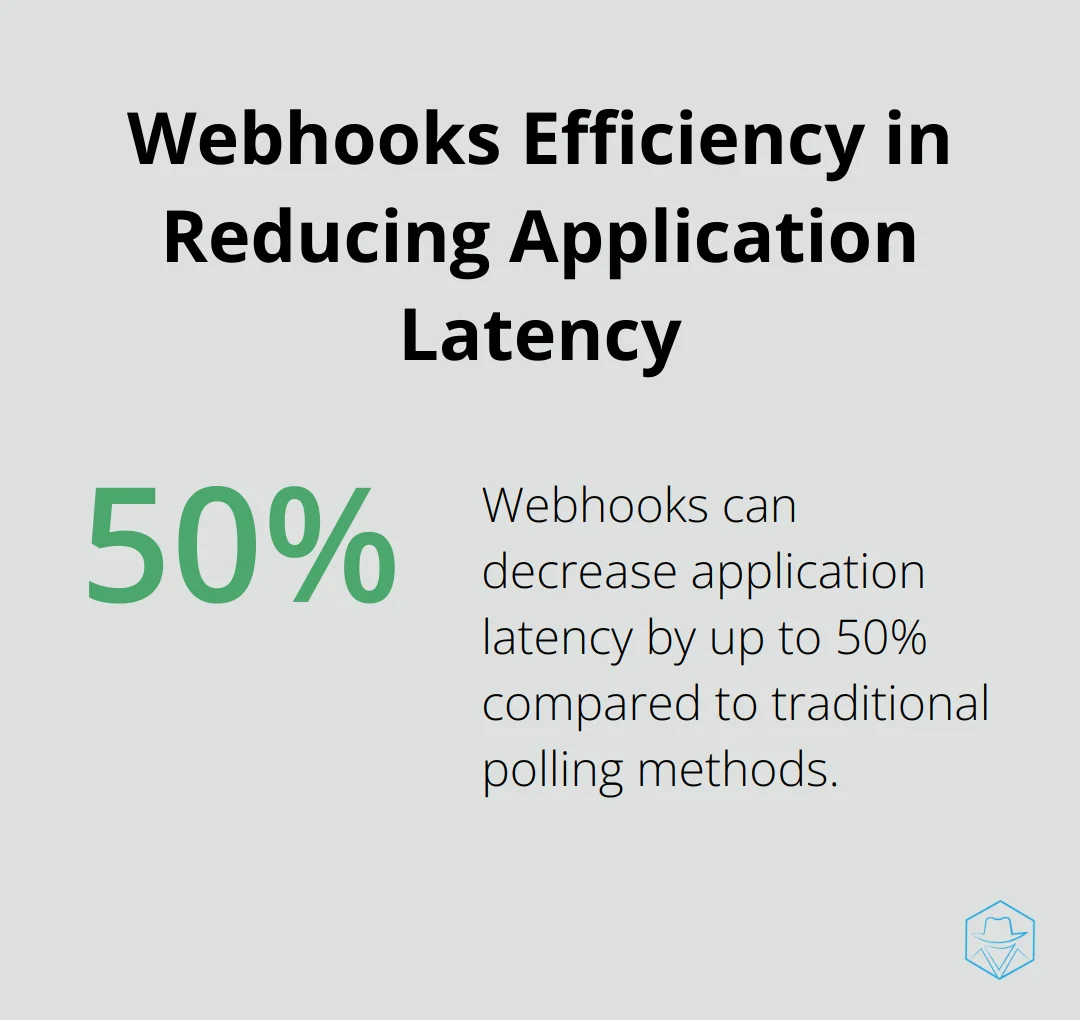
Set up webhooks for critical events like new contact creation or deal stage changes. This approach ensures your application always has the most up-to-date information without unnecessary API calls.
Debug and Handle Errors Effectively
Robust error handling maintains stable integrations. Log all API responses and errors for easier troubleshooting. Tools like Postman or Fiddler aid in testing and debugging API calls, helping you identify issues quickly.
Implement comprehensive logging to capture details about request URLs, headers, body content, and response times. This level of detail can significantly reduce debugging time when issues arise.
Consider Complementary Solutions
While mastering HubSpot’s API optimizes many business processes, consider complementary platforms to enhance your overall marketing strategy. For instance, Drop Cowboy offers features like Mimic AI™ for voice cloning and Smart Delivery™ for efficient global message delivery. These can work alongside your HubSpot integrations to create a more comprehensive communication solution.
Final Thoughts
The HubSpot API empowers developers to create custom solutions tailored to specific business needs. It automates processes, integrates systems, and provides deeper insights into customer data. Developers should respect rate limits, implement efficient data handling, and use webhooks for real-time updates to maximize the API’s potential.
The future of HubSpot API development promises advancements in AI-driven automation, enhanced security features, and more robust integration capabilities. As businesses rely more on interconnected systems, APIs will play a crucial role in driving efficiency and innovation. The HubSpot Developer website offers comprehensive documentation, code samples, and community forums for those who want to learn more.
While the HubSpot API is powerful, it can work in tandem with other specialized tools to create a comprehensive marketing and communication strategy. Drop Cowboy offers unique features like Mimic AI™ for voice cloning and Smart Delivery™ for efficient global message delivery, which can complement HubSpot integrations and enhance overall communication efforts.
blog-dropcowboy-com
Related posts
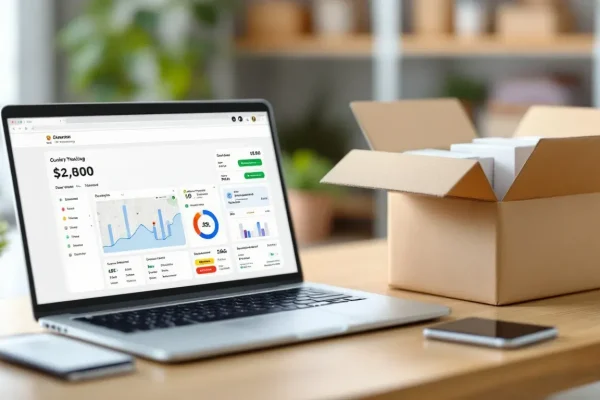
April 14, 2025
CJ Dropshipping USA: Benefits for Online Sellers
Explore the advantages of CJ Dropshipping USA for online sellers, including efficient logistics, product variety, and cost-effective solutions.

April 4, 2025
Marketing Automation Example: Boosting Conversions
Boost conversions with a marketing automation example that highlights practical tips, tools, and real-world data for enhanced lead generation.

March 11, 2025
Effective Text Marketing Templates for Your Business
Boost engagement with effective text marketing templates. Enhance reach, connect with customers, and elevate your business communication strategy.

August 11, 2025
Send voice message to multiple phone numbers
Send voice messages to multiple phone numbers effortlessly and boost your communication efficiency with practical tips and effective tools.
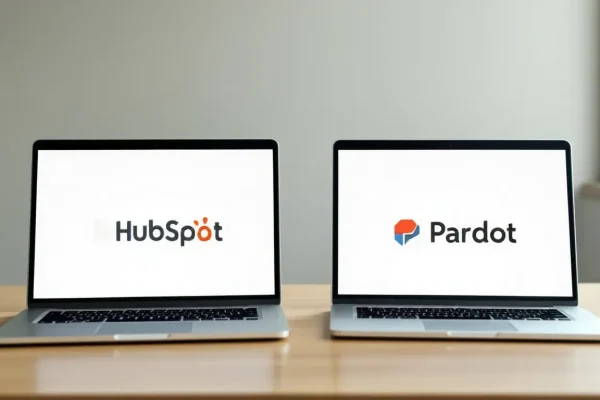
March 27, 2025
HubSpot vs Pardot: Battle of Marketing Automation
Compare HubSpot vs Pardot to choose the best marketing automation tool for your business needs. Analyze features, pricing, and effectiveness.

May 6, 2025
Marketing Automation Funnel: Optimize Your Conversions
Optimize your marketing automation funnel to boost conversions. Discover practical tips and proven techniques to streamline your customer journey.